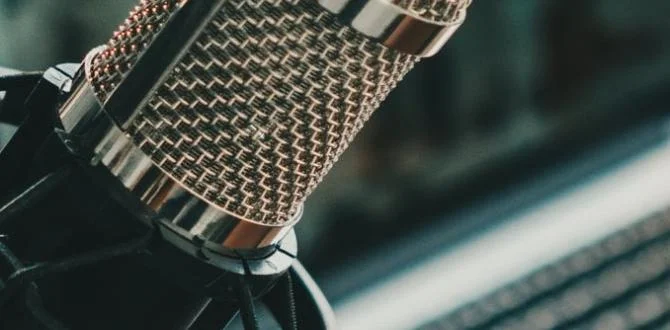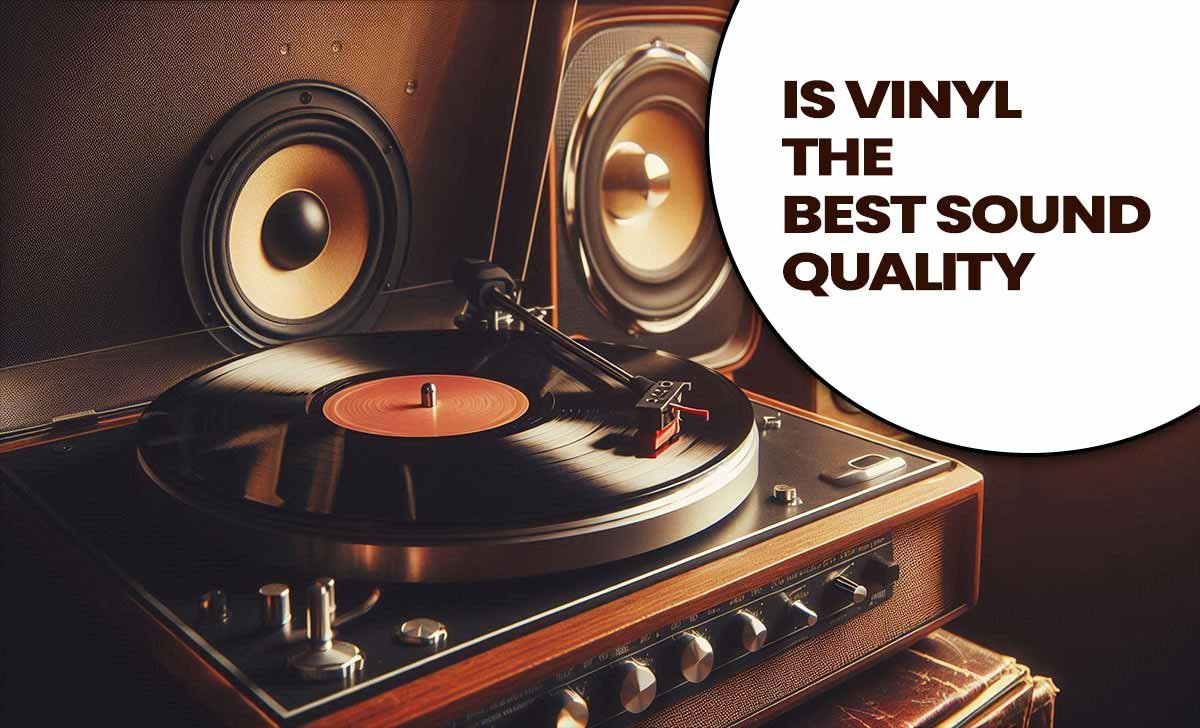Quick Summary: Discover the best TV sound settings for Bluetooth devices to achieve effortless, immersive audio. This guide simplifies connecting, optimizing, and troubleshooting your Bluetooth soundbar or headphones for a superior home entertainment experience. Enjoy crystal-clear sound with easy-to-follow adjustments!
Hey everyone, Bob E Riley here from Aimguider! Ever feel like your TV’s sound is just… okay? You’ve got your trusty Bluetooth speaker or headphones ready to go, but the audio just doesn’t quite hit right. It’s a common frustration: the tech is supposed to make things easier, but sometimes it feels more complicated. Don’t worry! Getting great sound from your TV through Bluetooth is totally achievable. We’ll walk through the simple steps to connect, find the best settings, and make sure your movies, shows, and games sound absolutely fantastic. Ready for audio that truly pulls you in? Let’s dive in!
Why Bluetooth Audio from Your TV Matters
In today’s world, we love our flexibility. Bluetooth technology lets us connect devices wirelessly, and that extends to our TVs! Whether you want to blast your favorite action flick through a powerful soundbar without tripping over wires, or enjoy late-night TV with headphones without disturbing anyone, Bluetooth makes it possible. However, simply connecting your device is only half the battle. The audio quality can vary wildly depending on your TV’s settings and how your Bluetooth device is configured. Getting these “best TV sound settings Bluetooth” right can transform your viewing experience from good to simply spectacular. It’s about unlocking the full potential of your audio gear and your entertainment system.
Connecting Your Bluetooth Device: The First Step to Better Sound
Before we can tweak any settings, we need to get your Bluetooth device paired with your TV. Most modern TVs have built-in Bluetooth capabilities, making this process relatively straightforward. If your TV doesn’t have it built-in, you might need a Bluetooth transmitter, which is a small device that plugs into your TV’s audio output (like a headphone jack or optical port) and broadcasts the sound via Bluetooth.
Step-by-Step Bluetooth Pairing (Built-in TV Bluetooth)
- Enable Bluetooth on Your TV: Navigate to your TV’s settings menu. Look for an option related to “Sound,” “Audio,” “Connections,” or “Bluetooth.” Select “Bluetooth” and then choose to “Add Device” or “Pair Device.”
- Put Your Bluetooth Device in Pairing Mode: This step varies by device. For headphones, it often involves holding down the power button until a light flashes. For speakers, there’s usually a dedicated Bluetooth button you need to press and hold. Check your device’s manual if you’re unsure.
- Select Your Device on the TV: Your TV should now scan for available Bluetooth devices. Once your device appears in the list, select it.
- Confirm Pairing: Your TV might ask you to confirm the pairing. Follow the on-screen prompts. Once successfully paired, your TV should indicate that the device is connected.
When Your TV Lacks Bluetooth: Using a Transmitter
If your TV isn’t Bluetooth-enabled, don’t despair! A Bluetooth transmitter is a game-changer. These devices are affordable and easy to use.
- Connect the Transmitter: Plug the transmitter into your TV’s audio output. This is often a 3.5mm headphone jack or an optical (TOSLINK) port. Use the provided cables.
- Power On the Transmitter: Connect the transmitter to a power source, usually via a USB cable.
- Pair the Transmitter with Your Device: Most transmitters have a pairing button. Put your Bluetooth headphones or speaker into pairing mode and then press the pairing button on the transmitter. Refer to your transmitter’s manual for specific instructions.
- Select the Correct Audio Output on Your TV: You might need to go into your TV’s sound settings and select the audio output you used for the transmitter (e.g., “Headphone Out” or “Optical Out”). Some TVs handle this automatically.
For more in-depth information on audio outputs, the definitive guide from Rtings.com breaks down the nuances between optical, HDMI ARC, and analog outputs, which is crucial when setting up external audio devices.
Optimizing TV Sound Settings for Bluetooth Audio
Once your device is connected, it’s time to fine-tune the sound settings. This is where we unlock those “best TV sound settings Bluetooth” for a truly immersive experience. Different TVs and Bluetooth devices will have slightly different options, but the principles are the same.
General TV Sound Settings to Adjust
- Sound Mode: Many TVs offer pre-set sound modes like “Standard,” “Movie,” “Music,” “Game,” or “Clear Voice.” Experiment with these to see which sounds best for what you’re watching. For movies, “Movie” often enhances dialogue and adds depth to sound effects. “Music” mode might offer a more balanced, richer audio profile for listening to shows or background music.
- Equalizer (EQ): If your TV has an equalizer, this is your superpower! An EQ lets you boost or cut specific frequencies (bass, treble, mids).
- Bass (Low Frequencies): Boost for more rumble in explosions or music. Cut if it sounds muddy.
- Mid-range (Mids): Crucial for dialogue. Adjust carefully; boosting too much can make voices sound tinny, while cutting can make them hard to hear.
- Treble (High Frequencies): Adds clarity and sparkle to sounds like cymbals or dialogue sibilance. Too much can be harsh.
- Surround Sound/Virtual Surround: Many TVs and soundbars try to simulate surround sound. If your Bluetooth device is a soundbar with its own virtual surround processing, you might get the best results with this off on the TV and let the soundbar handle it. If using headphones, try experimenting with your TV’s virtual surround to see if it enhances the experience.
- Dialogue Enhancement: This setting specifically boosts the mid-range frequencies where human voices sit, making dialogue clearer. It’s a lifesaver for action movies where sound effects can often overpower speech.
- Volume Control/Volume Leveling: Some TVs have features designed to prevent sudden loud commercials or quiet scenes. If you’re using external audio, you might find these redundant or even counterproductive. It’s often best to turn these off to have direct control over your audio.
Specific Settings for Bluetooth Audio
When using Bluetooth, there are a few additional considerations:
- Audio Delay/Lip Sync: This is a critical setting for Bluetooth audio. Because Bluetooth data has to be processed, there can sometimes be a noticeable delay between what you see on screen and what you hear. Your TV’s settings menu should have an “Audio Delay” or “Lip Sync” adjustment. You’ll typically set this to offset the delay of your Bluetooth device. Small increments are key. Some Bluetooth devices (especially higher-end headphones and earbuds) have very low inherent latency, making this less of an issue.
- Audio Output Format: While less common for Bluetooth, some TVs might let you select an audio output format. For Bluetooth, PCM (Pulse Code Modulation) is generally the most compatible format. Avoid formats like Bitstream unless you know your Bluetooth device specifically supports them and your TV is configured correctly.
- AV Sync Adjustment: Similar to Audio Delay, this feature aims to synchronize audio and video. If you notice lips are out of sync with speech, dive into your TV’s AV Sync settings.
Understanding Bluetooth Audio Codecs
The quality of your Bluetooth audio is also influenced by the audio codec used for transmission. A codec is like a language spoken between your TV and your Bluetooth device. If they speak the same language, the translation (audio) is clearer and more efficient.
Common Bluetooth Audio Codecs
Here’s a quick look at some popular codecs:
| Codec | Key Features | Typical Use Case |
|---|---|---|
| SBC (Subband Coding) | Basic, universally compatible. Lower quality compared to advanced codecs. | Default for most Bluetooth devices. Good for general use. |
| AAC (Advanced Audio Coding) | Better sound quality than SBC, especially for Apple devices. | Common in Apple products and some Android devices. Good for music streaming. |
| aptX | Offers near CD-quality audio with lower latency. Widely supported on Android. | Ideal for movies and gaming where audio quality and sync are important. |
| aptX HD / aptX Adaptive | Higher fidelity audio and even lower latency. Better for high-resolution audio and demanding applications. | Audiophiles, serious movie watchers, and gamers seeking the best wireless experience. |
| LDAC | Developed by Sony, supports high-resolution audio transmission. | Primarily found on Sony devices and some high-end headphones/speakers. Offers excellent quality. |
How to Check Your Codec: Your TV’s Bluetooth settings might indicate which codec is being used. If not, your connected Bluetooth device’s app (if it has one) often provides this information. For the best experience, try to ensure both your TV and your Bluetooth device support a higher-quality codec like aptX or LDAC if available. If your TV only supports SBC but your headphones support aptX, you’ll be limited to SBC.
Troubleshooting Common Bluetooth Audio Issues
Even with the best settings, you might run into a hiccup. Here are some common problems and how to fix them:
Audio Sync Problems (Lip Sync Issues)
- Solution: Use your TV’s Audio Delay or AV Sync adjustment feature. Start with small increments (like 50ms) and gradually increase until the audio matches the video. It often helps to sync to a scene with clear dialogue and visible lip movement.
Choppy or Interrupted Sound
- Solution: Bluetooth can be affected by distance and interference.
- Reduce Distance: Make sure your Bluetooth device is close to the TV.
- Minimize Interference: Other wireless devices (microwaves, Wi-Fi routers, other Bluetooth devices) can interfere. Try moving them or turning them off temporarily.
- Check Battery Levels: Low battery on your Bluetooth device can sometimes cause performance issues.
- Re-pair Device: Sometimes, simply unpairing and re-pairing the device can resolve connection glitches.
- Update Firmware: Check if your TV or Bluetooth device has any firmware updates available.
No Sound at All
- Solution:
- Check Volume: Ensure the volume is turned up on both your TV and your Bluetooth device.
- Confirm Connection: Double-check that your device is still showing as connected in your TV’s Bluetooth settings. Try disconnecting and reconnecting.
- Check TV Audio Output: Make sure your TV’s audio output is set to the Bluetooth device and not your TV speakers or another output.
- Test Device Elsewhere: Try connecting your Bluetooth device to another source (like your phone) to ensure the device itself is working correctly.
Low Volume
- Solution:
- Max Volume: Ensure both the TV and the Bluetooth device are at their maximum volume levels.
- Disable Volume Limiting: Some Bluetooth devices have built-in volume limiters. Check your device’s manual or app for such settings.
- TV Sound Settings: Ensure that any “Sound Leveling” or “Volume Normalization” settings on your TV are turned off, as they can sometimes reduce overall output.
Enhance Your Experience: Beyond Basic Settings
Once you’ve got the core settings dialed in, consider these tips to elevate your audio even further.
Positioning Matters
Where you place your Bluetooth speaker or how you wear your headphones can impact sound. For speakers, aim to place them at ear level and avoid corners that can over-amplify bass. For headphones, ensure a good seal over your ears for proper bass response and immersion.
Consider an External Device for Low-Latency Audio
If your TV’s built-in Bluetooth consistently struggles with lip sync, even after adjustments, a dedicated low-latency Bluetooth transmitter can be a worthwhile investment. Devices like the Avantree Audikast Plus are specifically designed to minimize audio delay, often using aptX Low Latency technology, which is a significant upgrade for movie watching and gaming.
Invest in Quality Headphones or Speakers
While settings are important, the physical capabilities of your audio gear play a huge role. A higher-quality Bluetooth speaker or a pair of well-engineered headphones will inherently produce better sound and often feature more advanced codecs and lower latency, making the entire process smoother and the result more enjoyable.
FAQ: Your Bluetooth TV Audio Questions Answered
Q1: What is the best Bluetooth audio codec for TV?
A1: For a balance of quality and low latency ideal for TVs, aptX or aptX HD are generally excellent choices. If both your TV and device support it, LDAC offers even higher fidelity. For universal compatibility, SBC is the fallback, but quality can be lower.
Q2: How do I fix audio delay with my Bluetooth TV headphones?
A2: Use your TV’s “Audio Delay” or “Lip Sync” setting. Gradually adjust it in the sound menu until the sound perfectly matches the on-screen action. Small, incremental changes work best. Ensure your TV and headphones support a low-latency codec like aptX Low Latency if possible.
Q3: Can I use two Bluetooth headphones at the same time with my TV?
A3: Some TVs allow you to connect multiple Bluetooth devices simultaneously. Check your TV’s Bluetooth settings. If your TV doesn’t support it natively, a dual-link Bluetooth transmitter can connect two pairs of headphones to one audio source.
Q4: My Bluetooth speaker sounds tinny. What TV settings should I change?
A4: This often means the mid-range or treble frequencies are too high, or the bass is too low. Try adjusting your TV’s equalizer (EQ). Add a bit more bass, and slightly reduce the treble or mid-range if voices sound harsh. Experimenting with different TV sound modes (like “Movie” or “Music”) might also help.
Q5: Is it better to use a Bluetooth transmitter or my TV’s built-in Bluetooth?
A5: For newer TVs, built-in Bluetooth is convenient. However, dedicated Bluetooth transmitters often offer better range, more reliable connections, and critically, support higher-quality codecs and low-latency technology (like aptX LL) that built-in TV Bluetooth might lack. If you experience audio delay or poor quality, a transmitter is usually an upgrade.
Q6: How do I ensure my Bluetooth speaker has the “best TV sound settings” for movies?
A6: Connect your speaker, then select a “Movie” sound mode on your TV. If available, use the equalizer to slightly boost bass for impact and ensure dialogue is clear by adjusting mid-frequencies. Disable any TV volume leveling features. For optimal results, ensure your TV and speaker are using a capable codec like aptX.
Conclusion: Enjoying Your Effortlessly Enhanced Audio
Getting the “best TV sound settings Bluetooth” is all about making smart connections and simple adjustments. By understanding how to pair your devices, navigate your TV’s audio menus, and troubleshoot common issues, you’ve taken a massive step towards a truly superior home entertainment experience. Whether you’re diving into a thrilling movie, enjoying your favorite music, or getting lost in a video game, the right audio settings make all the difference. Remember to experiment with sound modes, play with the equalizer, and always keep an eye on that lip sync. With these tips, you’re well on your way to enjoying clear, powerful, and immersive sound from all your favorite content, completely wire-free. Happy viewing, and even happier listening!






